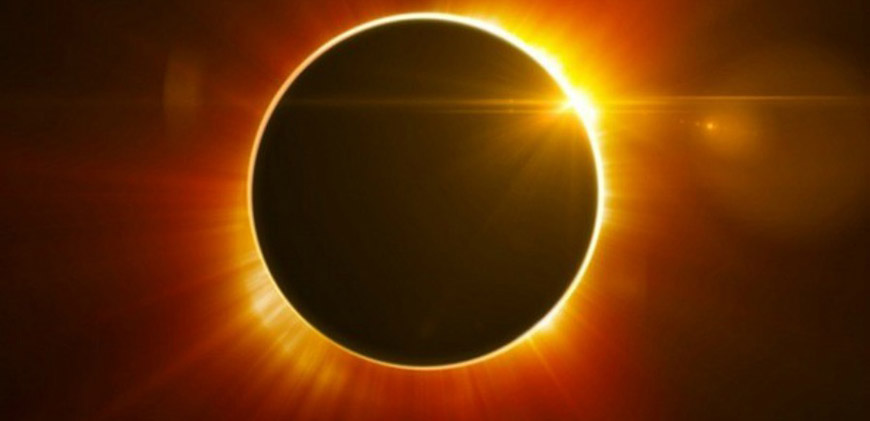
Midday on Monday, Aug. 21, Fort Collins will dip into a dusky shadow as the moon passes directly between the earth and the sun for a rare, majority solar eclipse. Just to the north and east, in parts of Wyoming and Nebraska, viewers will experience the “totality” – a full solar eclipse.
At Colorado State University, the College of Natural Sciences’ Little Shop of Physics is spearheading eclipse activities on campus as well as outreach engagement in the path of the totality.
“An eclipse like this one is a time when people are focused on a natural event,” said Brian Jones, director of the Little Shop of Physics. “They’ll be curious, they’ll have questions, and we’ll be able to help them understand what they are seeing.”
On-campus viewing
On campus, people will have viewing opportunities on the fields near the intersection of Meridian and University avenues. “We will have two telescopes set up to project the eclipse, a disco ball that will project hundreds of images of the partially eclipsed sun on a screen, mirror cards for folks to do their own projections – and students to explain what’s going on,” Jones said. They’ll also have viewing glasses and “solar grasshoppers who dance in the sunlight – they’ll stop dancing once enough of the disk is covered,” he added. Jones himself will be at the on-campus event, working with the learning assistants from General Physics I, who will be on hand to help out.
In Fort Collins, the eclipse will begin at 10:23 a.m., reach its maximum – 95 percent coverage – at 11:47 a.m., and conclude at 1:14 p.m.
In the path of totality
Off campus, in the path of totality, a group of Little Shop staff and interns, led by Outreach Coordinator Heather Michalak and Assistant Director Adam Pearlstein, will travel to Carhenge, a replica of Stonehenge made from cars, in Alliance, Nebraska. The attraction is expecting as many as 10,000 visitors for the celestial happening.
In Alliance, Little Shop will set up telescopes and projections of the eclipse, as well as other demonstrations and learning activities to engage and assist visitors. “This will be a very exciting event,” Jones said. “And what better place to see the eclipse?”
Another CSU contingent will be led by Little Shop Teacher in Residence Shelia Ferguson and new physics and astronomy faculty member Emily Hardegree-Ullman. They will partner with the College of Natural Sciences Learning Community’s Science Outreach Scholars, led by Allie Keller, coordinator of the Learning Community. This group, which will include about 40 CSU student volunteers, will travel to Mitchell, Nebraska. There, they will assist some 700 students from the town’s schools with eclipse-related activities. “The schools are very excited about our plans,” Jones said.
Safe and memorable viewing
This summer’s eclipse will streak across North America in a 70-mile-wide path over the course of 90 minutes, starting in Newport, Oregon at 10:15 a.m. (PDT) and ending in Charleston, South Carolina at 2:45 p.m. (EDT). “It’s a dramatic, memorable event, and one that will stick with people – and, we hope, will ignite a desire for some people to learn a bit more,” Jones said.
No matter where people might catch the rare event, “we want everyone to be able to look for themselves,” said Jones. But it is dangerous to look directly at the sun – especially during eclipse events, when, as Jones explained, “the reduced intensity decreases your natural tendency to blink or look away.”
That’s why Little Shop made 50,000 pairs of sun-safe, disposable eclipse-viewing glasses. They donated about 30,000 of these glasses to the Poudre School District, providing one pair for each student in the entire district. The other 20,000 are going to be distributed to the CSU community at Ram Welcome, the Kids Music Adventure at NewWestFest, and at the on-campus eclipse event itself.
Please watch responsibly
While CSU recognizes the significance of this event, the University will not delay the opening of fall semester courses. (Creation of the University’s academic calendar is a complex project that involves all units on campus, and these calendars are established many years in advance.) The University is encouraging members of the campus community to participate in the viewing events offered by the Little Shop of Physics and the College of Natural Sciences as their class schedules allow.
In case you miss this one, the next total solar eclipse in this part of the country will occur 28 years from now and will pass just south of Denver. Another total solar eclipse will travel over U.S. soil from Texas through Maine in just seven years, April 8, 2024. Prior to this year’s event, the most recent total solar eclipse to pass over the continental United States was in 1979. Many partial solar eclipses have been visible from various places in the country since then, including one that crossed the southern half of the country in 2005.
“This event gives us a reason to remember the cycles of the natural world, gives an occasion for reflection, an occasion for wonder – and an occasion for sharing this event with others,” Jones said. “It’s a great way to kick off the school year.”